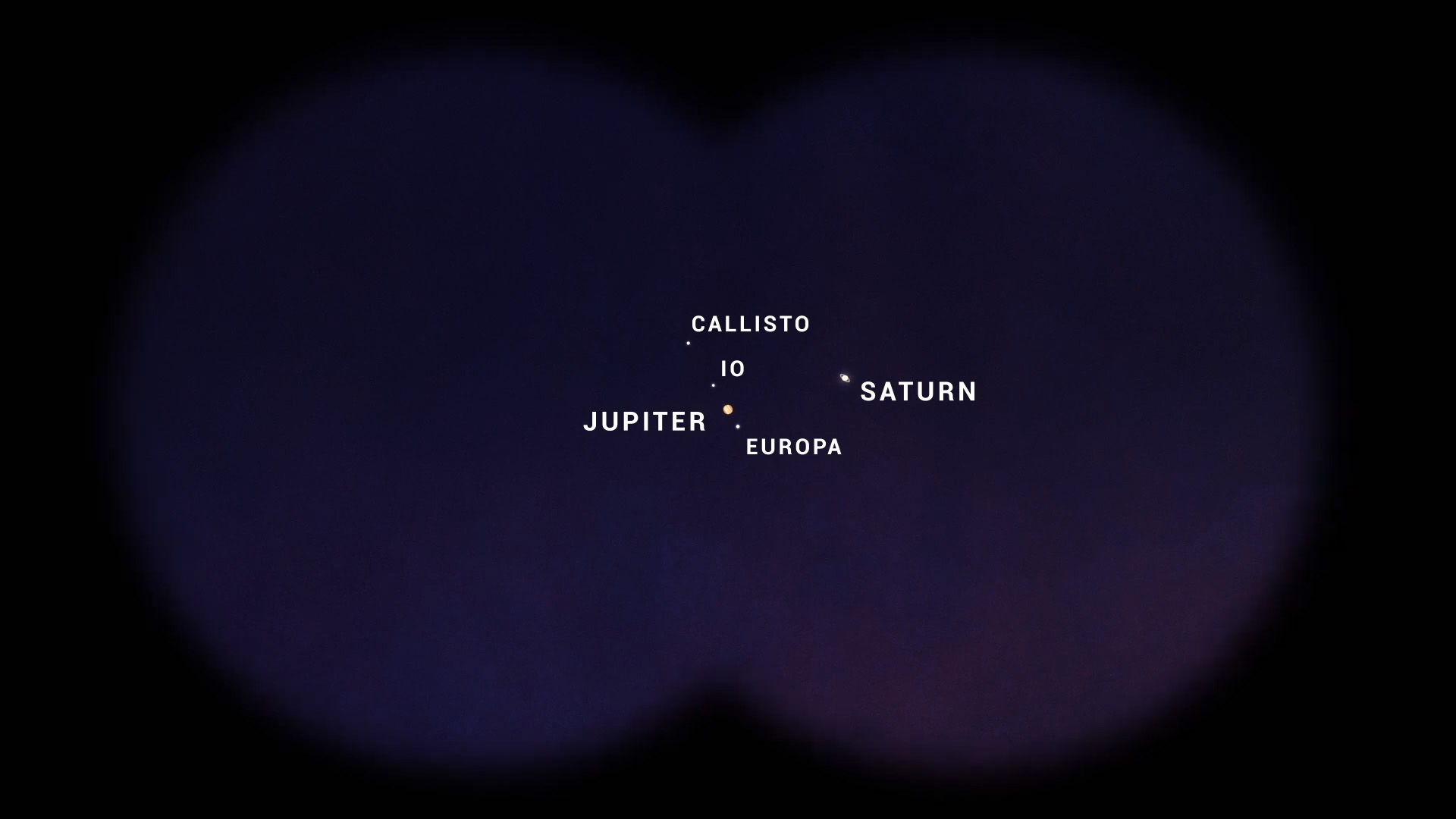How to watch tonight's 'great conjunction' of Jupiter and Saturn
This evening, on the first day of astronomical winter, you may be able to see a rare phenomenon witnessed when the famous astronomer Galileo Galilei was alive: Jupiter and Saturn will appear so close to one another in the night sky, the gassy behemoths will look like one star: the Christmas star.
Called the great conjunction, the seemingly snuggled-up planets will appear just a tenth of a degree apart, or about one-fifth the diameter of a full moon. While the great conjunction occurs every 20 years, the planets haven't been this close to each other since July 16, 1623, or 397 years ago, according to timeanddate.com. And the last time the planets were this close to each other at night, when the sun's glare didn't make it impossible to see, was in 1223 — nearly 800 years ago!
Related: Cassini's greatest hits: Best photos of Saturn and its moons
How can you catch the great conjunction? Shortly after sunset, in the Northern Hemisphere, look into the southwestern sky and you should see the duo shining brightly. Hold your pinkie finger at arm's length once you spot the spot and that should be enough to block out Jupiter and Saturn, which are 11 and nine times the diameter of Earth, respectively. The great conjunction should also be visible from the Southern Hemisphere, just in the western sky. Jupiter, being the solar system's largest planet, will be the brighter of the two.
Wherever you are on Earth, the great conjunction will occur near the horizon. If you get out your skywatching binoculars or a telescope, the duo will show up in the same field of view, Live Science reported. Though you should be able to see the heavenly sight for the rest of December, the two planets will be outshined by the sun come January.
Live webcasts of the great conjunction
If you can't get outside to view the conjunction or your skies are cloudy, Space.com put together a list of webcasts so you don't miss out:
—The online observatory Slooh begin their webcast at 2 p.m. EST (1900 GMT). You can watch the event on Slooh's YouTube channel.
Sign up for the Live Science daily newsletter now
Get the world’s most fascinating discoveries delivered straight to your inbox.
—Lowell Observatory in Flagstaff, Arizona, will also host a webcast: The event will include commentary from astronomers and educators as well as evening telescope views at the Lowell Observatory website or on their YouTube channel starting at 7 p.m. EST (0000 GMT on Dec. 22).
—The great conjunction webcast by Vanderbilt Dyer Observatory at Vanderbilt University in Brentwood, Tennessee, is hosted by Billy Teets, acting director and outreach astronomer at the observatory. The webcast will start at 6 p.m. EST (2300 GMT) on the observatory's YouTube channel.
—The online observatory Virtual Telescope Project will webcast the great conjunction from Ceccano, Italy, beginning at 10:30 a.m. EST (1530 GMT). You can watch the event on the website of the Virtual Telescope Project.

Planets' long-distance relationship
As for why they generally have such a long-distance relationship, Jupiter and Saturn take very different treks around the sun. Saturn's orbit much longer, taking 30 years for a full orbit compared with Jupiter's 12. And they also have very different tilts during their travels. Whereas Jupiter has an axial tilt of a mere 3 degrees (also explaining why the giant has no seasons), Saturn leans over a whopping 27 degrees, according to NASA. So from Earth's perspective, the two rarely appear so close to one another.
"You can imagine the solar system to be a racetrack, with each of the planets as a runner in their own lane and the Earth toward the center of the stadium," Henry Throop, astronomer in the Planetary Science Division at NASA Headquarters in Washington, D.C., said in a NASA statement. "From our vantage point, we'll be able to see Jupiter on the inside lane, approaching Saturn all month and finally overtaking it on December 21."
If you miss tonight's event, you'll have to wait another 20 years. The next great conjunctions will occur on Nov. 2, 2040 and April 7, 2060, timeanddate.com reported. But the show will be a little less impressive, as the planets will appear 11 times farther apart, or a 1.1-degree separation, compared with tonight's great conjunction.
Originally published on Live Science.
Jeanna Bryner is managing editor of Scientific American. Previously she was editor in chief of Live Science and, prior to that, an editor at Scholastic's Science World magazine. Bryner has an English degree from Salisbury University, a master's degree in biogeochemistry and environmental sciences from the University of Maryland and a graduate science journalism degree from New York University. She has worked as a biologist in Florida, where she monitored wetlands and did field surveys for endangered species, including the gorgeous Florida Scrub Jay. She also received an ocean sciences journalism fellowship from the Woods Hole Oceanographic Institution. She is a firm believer that science is for everyone and that just about everything can be viewed through the lens of science.









